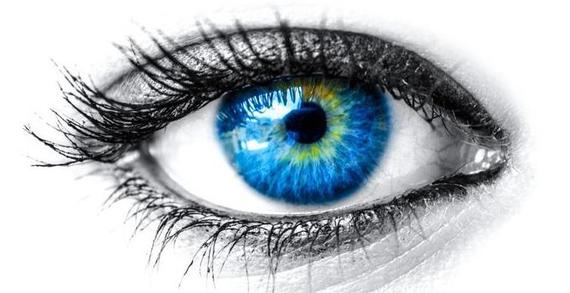As Thanksgiving fast approaches, we're reminded to give thanks for the wonderful things in our lives: our loved ones, our freedom and most certainly our good health. As humans, we're extremely visual creatures, so as you look upon the joyous gathering of friends and family prior to feasting, consider taking a moment to give thanks for your healthy eyesight as well.
Many of us are guilty of taking some of the most wondrous and spectacular things about how our bodies function for granted. I think it was Ben Franklin who remarked how people marvel at beautiful vistas, but forget about the miracle of the human body. For example, how often do you consider the sheer number of individual cells working in unison to sustain life inside your body, or ponder the magnificent evolutionary changes which must have occurred to allow you to unconsciously breathe in a perfectly balanced atmospheric gas which then gives life to those individual cells.
Our bodies are truly fascinating, and the eyes are one of the most interesting and critical parts. These feelings and thoughts you're experiencing reading this article this very moment are a direct result of photons of light being processed by your eyes and interpreted by your brain. Here are seven more fascinating and surprising facts about your eyes to remind you to give thanks for your eyesight this Thanksgiving:
1. The retina in the back of your eyes are made up of at least 120 million cells that are extremely sensitive to light. Of those cells, between 6 and 7 million of them are "cones," which allow you to see the color and details of the world surrounding you. The other more than 110 million cells are called "rods," which help you to see better in the dark and distinguish between black and white. So surprisingly, less than a tenth of your visual receptors actually detect color.
2. On average, you blink around 17 times per minute, 28,800 times per day, and 5.2 million times per year. On that note, you actually blink less when you're reading, which is why your eyes can feel tired very quickly when you spend a lot of time reading or on the computer. Conversely, you blink more when you're chatting away! The old saying, "In a blink of an eye" came about because the muscle which allows you to blink is the fastest muscle in the body. A blink typically lasts 100-150 milliseconds, and this action plays a vital role in keeping your eyes moist and debris-free.
3. Your eyes are incredibly adaptable. In fact, if you decided to wear your glasses upside down, your brain would eventually correct your vision on its own. You would see upside down for a few days, but your brain will do marvelous things to ensure survival and would soon process that information into the correct orientation. Pretty cool!
4. The lens in your eyes, which focuses on the object you're looking at, is faster than any man-made camera on earth. These changes occur almost instantly, before you even realize it's happening. If it took a second or two like most cameras, things would continually seem like they are out of focus.
5. Your eyes have the best "auto-correct" function around. Whether you're born with them or they are caused by health conditions such as glaucoma or a stroke, many people have blind spots which would be extremely debilitating if it wasn't for your brain and your eyes working so well together. These gaps in your vision are essentially "filled in" by the brain, completing the picture that you see in front of you despite having a missing piece or two.
6. Your eyes are made up of more than 2 million working parts that function in unison to create vision. While doctors have not yet been able to transplant eyeballs from human to human due to the sensitivity of the optic nerve, surprisingly enough shark corneas (yes, sharks!) are very similar to ours and research is underway to discover if they can successfully be used in human transplantation.
7. Eye color is controlled by the level of melanin in your iris. Brown yes have more melanin (a dark pigment) in the iris, and blue eyes have less melanin which allows blue collagen to show through. Interestingly enough, if you have blue eyes then you share a common ancestor with every other blue-eyed person in the world. The first person ever to have blue eyes lived somewhere between 6,000 and 10,000 years ago. Before then, all people had brown eyes!
These are just a few of the amazing facts about your eyes which should give you good reason to give thanks for them this year. I wish you all a healthy and happy Thanksgiving!
Dr. Brian Boxer Wachler is an inventor of eye surgical procedures and a best-selling author of three books on Keratoconus, refractive surgery and LASIK. He has been an FDA investigator for 13 clinical trials and is extensively published in medical literature. For more information, please visit www.keratoconusinserts.com or www.boxerwachler.com.
